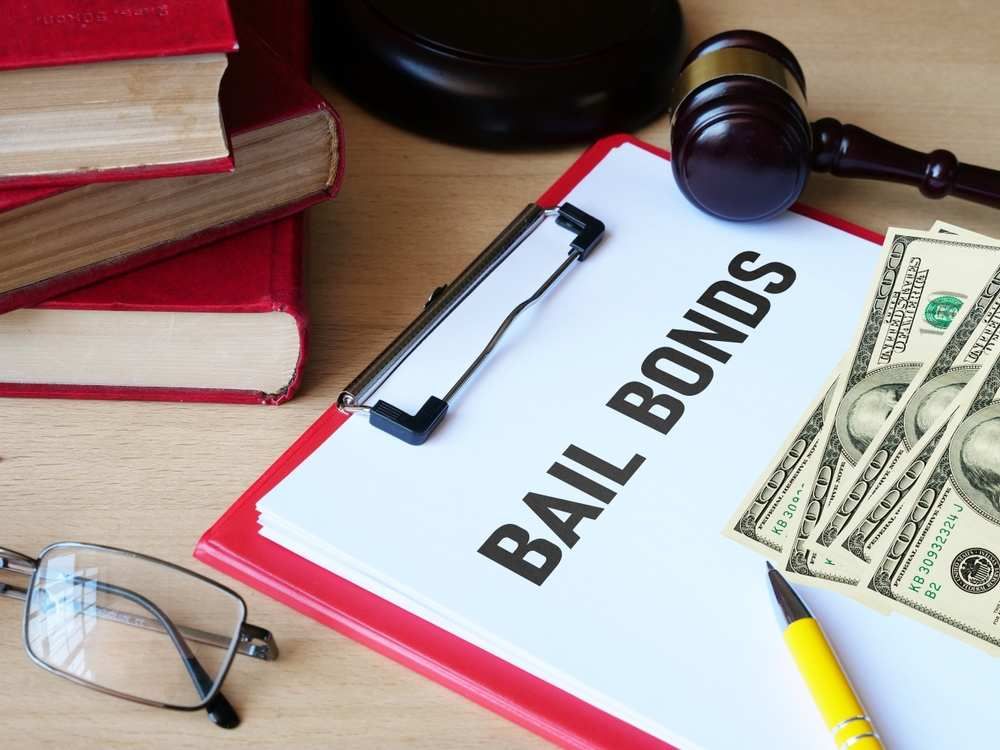Recognizing the Basics of Bail Bonds: What You Need to Know
Browsing the complexities of bail bonds is a crucial element of the lawful system that can substantially impact the charged's journey via court proceedings. The details of exactly how bail bonds operate, the numerous types readily available, and the vital factors to consider in choosing a credible bail bondsman can be intimidating.
What Is Bail?
Bail is an economic plan that permits a private charged of a criminal offense to be launched from protection while awaiting trial. The key purpose of bail is to make certain that the defendant shows up for future court process (Bail Bondsman). Commonly set by a court, the bail amount differs depending on the nature of the criminal offense, the offender's criminal history, trip threat, and other significant aspects
When bail is approved, the charged or a representative needs to pay a specified amount, which might be in cash or with a bail bond. In some cases, bail can be denied entirely, especially for serious offenses or if the suspect positions a substantial threat to public safety and security. The concept of bail is rooted in the presumption of innocence, strengthening the idea that individuals should not be punished prior to a conviction.

Understanding Bail Bonds
A bail bond is a financial instrument that helps with the release of an accused person from safekeeping, functioning as an assurance for their appearance at future court dates. This arrangement allows defendants to maintain their liberty while waiting for test, minimizing the problems connected with incarceration. The bail bond process typically involves a third-party firm, referred to as a bondsman, who offers the necessary funds to the court on behalf of the charged.
Bail bonds come in various kinds, consisting of surety bonds, home bonds, and cash bonds, each with distinctive demands and ramifications. Surety bonds, one of the most typical type, call for a superior payment, usually a percent of the overall bail quantity, which is non-refundable. On the other hand, a residential property bond includes using property as collateral, while cash bonds require the full bail amount to be paid in advance.
Recognizing the nuances of bail bonds is critical for accuseds and their households. It is important to grasp the prospective financial effects, including commitments and charges to the bail bondsmansman, as well as the lawful responsibilities linked to guaranteeing court looks. Knowledge of these aspects aids in making notified choices during a difficult time.
How Bail Bonds Work
The procedure of securing a bail bond usually entails several essential actions that make certain the accused can regain their flexibility while awaiting test. Originally, the specific or their depictive contacts a bondsman, who examines the instance and the linked risks. The bondsman will need info regarding the implicated, consisting of the charges, the bail amount set by the court, and any type of appropriate individual information.
When the bail bondsman accepts supply the bond, the implicated or their agent has to pay a non-refundable cost, normally a percent of the overall bail amount. This fee makes up the bondsman for taking on the economic threat of making certain the charged shows up in court. In some situations, collateral might additionally be called for, such as home or important assets, which functions as protection for the bond.
After any kind of security and the charge are arranged, the bail bondsman submits the required documentation to the court. Upon authorization, the bail is uploaded, and the implicated is released from safekeeping. It is vital for the charged to adhere to all court days and conditions, as failing to do so can result in the forfeiture of the bond and possible legal effects.
Types of Bail Bonds
Different types of bail bonds are available to match different circumstances and requirements. The most typical type is the guaranty bond, where a bail bondsman warranties payment of the complete bail quantity to the court in exchange for a non-refundable charge, generally around 10% of the bail. This arrangement enables defendants to protect their release without paying the entire bail upfront.
Another kind is the cash bond, which needs the defendant or a co-signer to pay the complete bail quantity in cash money directly to the court - Bail Bonds. This option is commonly my website preferred for lower bail quantities, as it guarantees the cash is returned upon the defendant's look at all court procedures
Home bonds entail using realty as security. In this case, the court puts a lien on the property, which can be surrendered if the defendant stops working to show up.
Last but not least, federal bail bonds are particularly created for government instances, often including greater quantities and added complexities. Recognizing these different bail bond kinds is essential for offenders and their family members in making informed decisions during a difficult time.
Selecting a Bondsman
When picking a bond bondsman, it is important to consider several essential aspects that can affect the general experience and end result. Examine the bondsman's credibility by investigating online reviews and obtaining referrals from relied on resources. A trusted bail bondsmansman will certainly have a history of professionalism and trust and successful cases.

The majority of bail bondsmen bill a non-refundable fee, typically around 10% of the bail amount. Openness in prices is a hallmark of a reliable bondsman.
Conclusion
Bail serves as a monetary guarantee of court look, while various kinds of bail bonds cater to different scenarios. Understanding the operational systems of bail bonds and picking a respectable bail bondsman can significantly influence the general experience.
The details of how bail bonds operate, the numerous kinds available, and the vital factors to consider in picking a trusted bail bondsman can be discouraging. The bail bond procedure generally includes a third-party firm, recognized as a bond bondsman, who offers the needed funds to the court on part of the accused.
The most common kind is the guaranty bond, where a bond bondsman warranties payment of the full bail amount to the court in exchange for a non-refundable charge, normally around 10% of the bail. Bail offers as an economic guarantee of court look, while numerous kinds of bail bonds provide to different situations. Understanding the operational mechanisms of bail bonds and selecting a reliable bail bondsman can significantly influence the total experience.
Comments on “Recognizing Your Legal Rights When Making Use Of a Bail Bondsman”